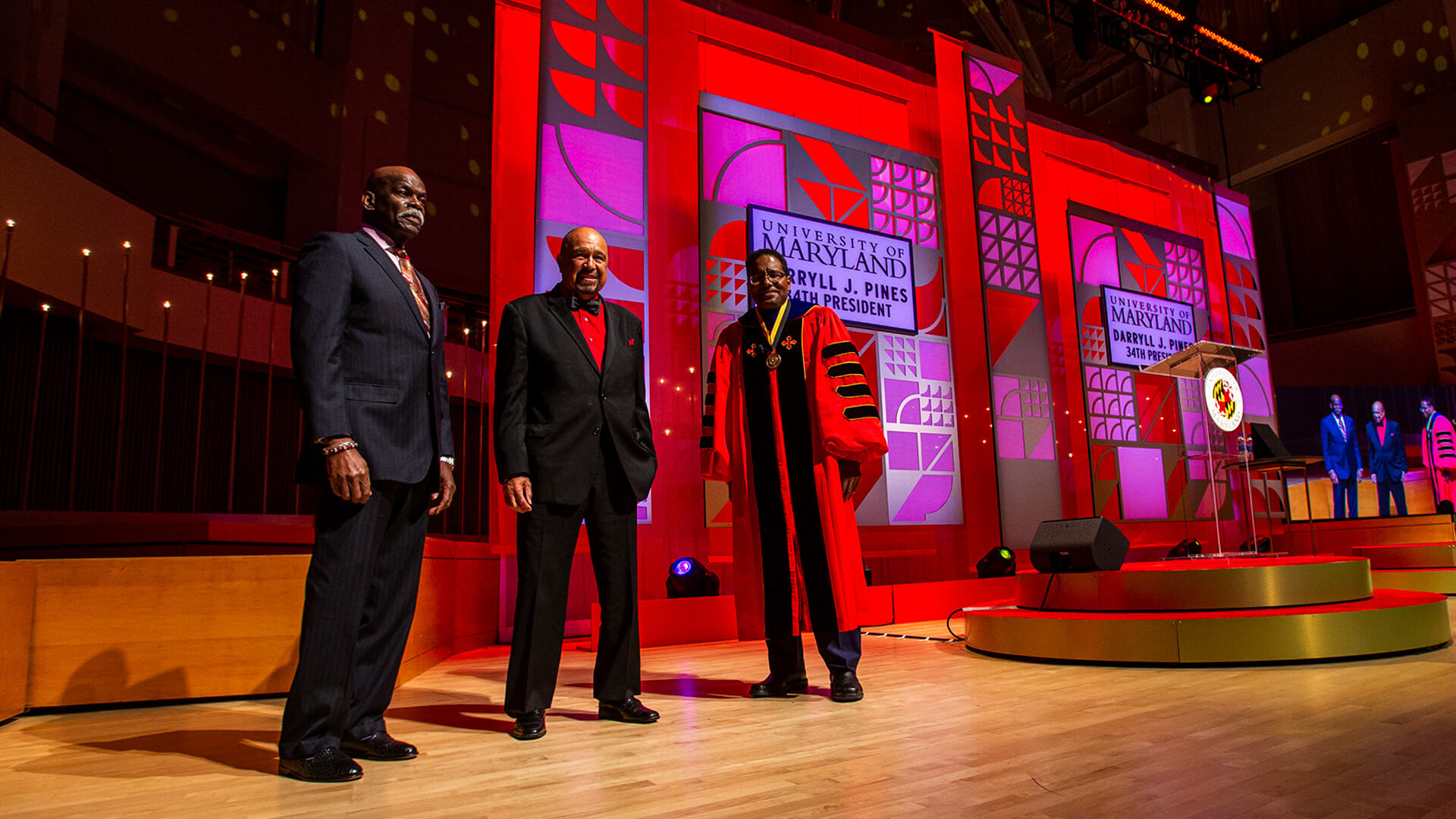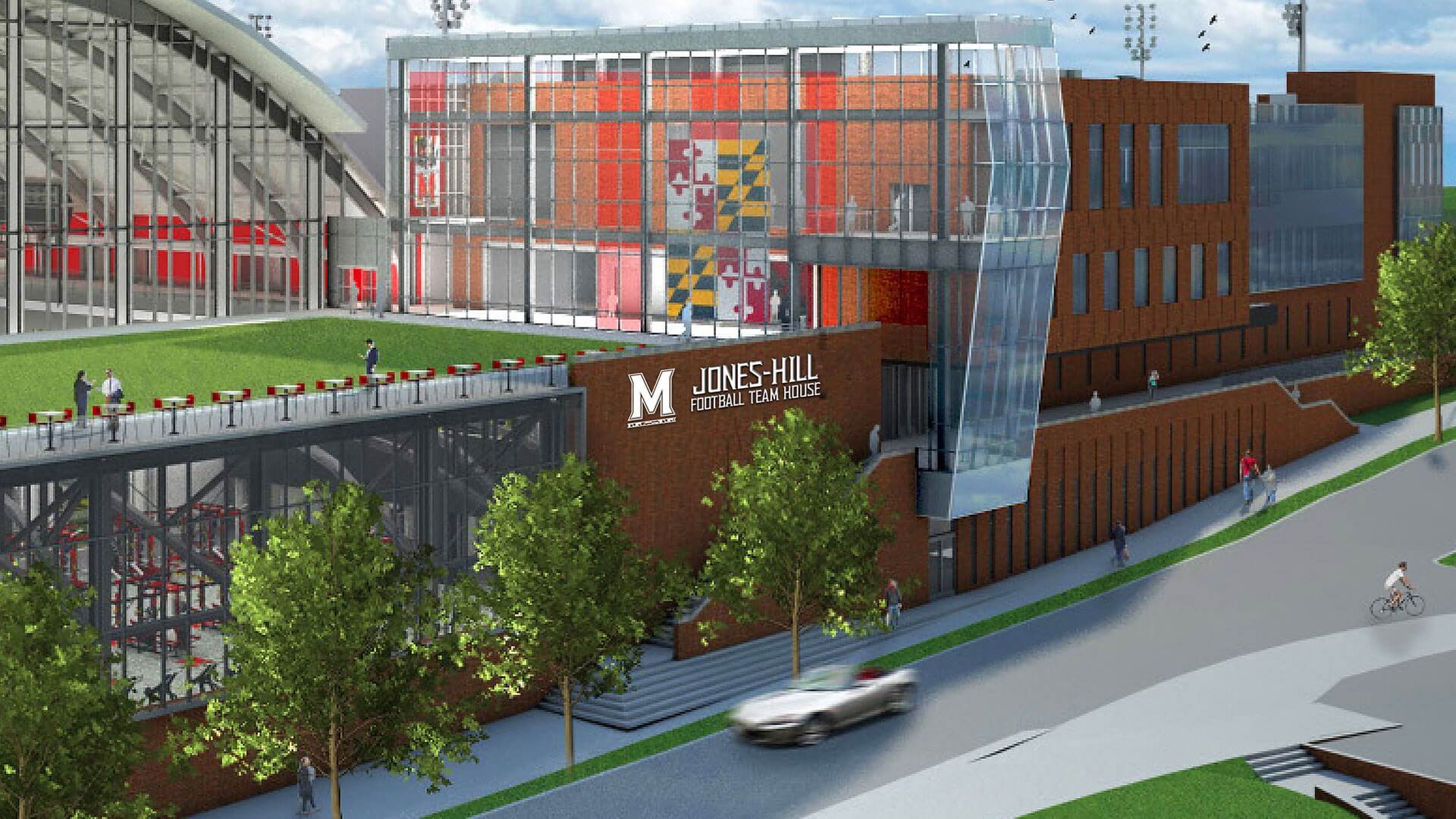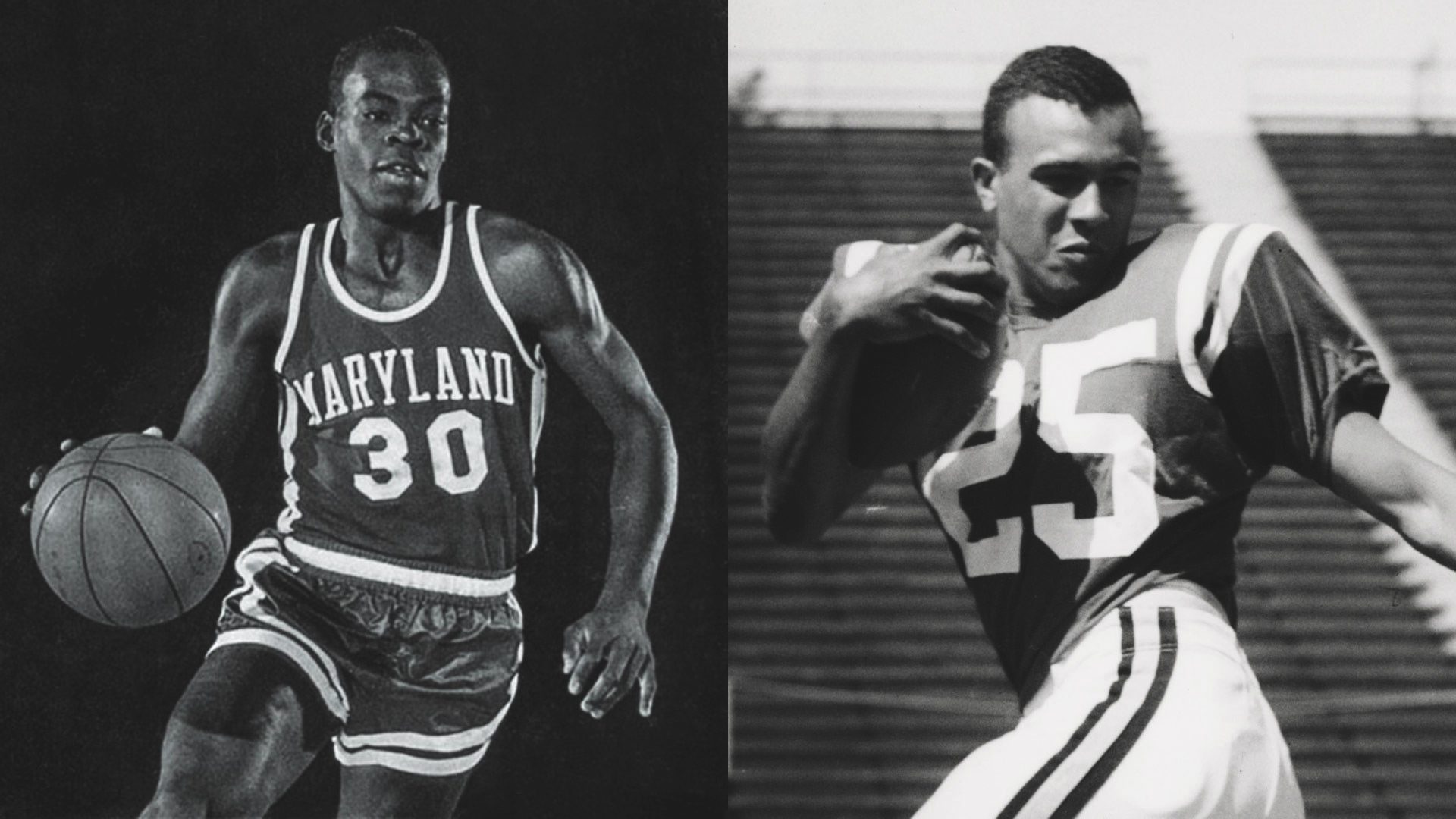- April 27, 2021
- By Annie Krakower
Two Terps who broke the color barrier in Maryland Athletics more than 50 years ago will be honored through the naming of a state-of-the-art Cole Field House facility, the new home of Maryland football.
Jones-Hill House, announced by UMD President Darryll J. Pines during his inauguration speech on Thursday, will celebrate Billy Jones, who became the first Black basketball player at Maryland and in the ACC in 1965, and Darryl Hill, who accomplished the same in football in 1963.
 “The determination, courage and strength of these two individuals helped pave the way for thousands of Black student-athletes today, but they also helped break the chains of segregation and discrimination for every one of us,” Pines said before inviting both honorees onto the Clarice Smith Performing Arts Center stage. “Jones-Hill House will not only cement the legacy of these two trailblazers but will serve as an inspiration to our entire university community.”
“The determination, courage and strength of these two individuals helped pave the way for thousands of Black student-athletes today, but they also helped break the chains of segregation and discrimination for every one of us,” Pines said before inviting both honorees onto the Clarice Smith Performing Arts Center stage. “Jones-Hill House will not only cement the legacy of these two trailblazers but will serve as an inspiration to our entire university community.”
The facility, which is slated to fully open in the coming months, will house the football performance center and include indoor and outdoor practice fields; football operations spaces such as coaching offices, team meeting rooms, a locker room and dining area; and strength, conditioning and hydrotherapy areas. It will foster a holistic performance approach, including career and nutrition support.
Part of the larger Cole Field House project—a hub of sports and innovation that will eventually include a research wing and entrepreneurship center—Jones-Hill House was supported through a leadership gift from Kevin Plank ’96, the founder and executive chairman of Under Armour. The alum, who was also in attendance at Thursday’s investiture ceremony, decided to forgo putting his own name on the building and instead honor the two Terp pioneers.
 “What began as a financial gift grew to something much more meaningful last summer as my wife and fellow Terp, DJ, and I considered how we could positively influence the conversation around social justice,” he said. “Honoring these two trailblazers by naming our facility with Billy Jones and Darryl Hill is fitting for our school and for all of the student-athletes and entrepreneurs who will walk the halls of this house for many years to come.”
“What began as a financial gift grew to something much more meaningful last summer as my wife and fellow Terp, DJ, and I considered how we could positively influence the conversation around social justice,” he said. “Honoring these two trailblazers by naming our facility with Billy Jones and Darryl Hill is fitting for our school and for all of the student-athletes and entrepreneurs who will walk the halls of this house for many years to come.”
Jones, whose debut against Penn State made him UMD’s first Black men’s basketball scholarship player to take the court, played with a forward-looking “why not?” mentality. Refusing to dwell on the unfair calls, hard hits and racial slurs he too often faced, he averaged double-digit points per game in two of his three seasons at Maryland and served as a team captain his senior year.
He went on to become an assistant coach at American University, the University of California, Santa Barbara and Stanford and head coach at the University of Maryland, Baltimore County over a 12-year career. He then worked in human resources at Lockheed and Tupperware and as a manager for cast services at Walt Disney World for 15 years before retiring in 2011.
“A young Black kid from the east side of Towson could never imagine having his name on a building at the University of Maryland. I felt beyond gratitude,” Jones said.
UMD recruited Hill to join the Terps in spring 1962. But even though he grew up idolizing Jackie Robinson, he told then-assistant coach Lee Corso that he wasn’t interested in being a groundbreaker. When Corso asked if he was scared, “that was the button that he pushed that got my attention,” Hill said.
He made his UMD debut the next year and went on to set the program’s then-single-game record with 10 receptions against Clemson, establish an ACC season record with seven touchdown catches and threaten Maryland’s single-season record for receptions with 47. He played in the NFL with the New York Jets before becoming an entrepreneur, keeping his Terp ties along the way: He served as director of major gifts for the Terrapin Club from 2003-09 and is on the Maryland State Athletic Hall of Fame Board of Directors.
“I was totally surprised, honored and gratified,” Hill said of the facility naming. “It tells a story about what Maryland did in terms of breaking down the barrier of racial segregation in sports. It should serve as a beacon for our students.”
Jones-Hill House will also feature a new area called Game Changers Row, which will recognize other pioneers who advanced diversity and inclusion in Maryland Athletics, making contributions to their sports and community like the facility’s two namesakes.
“We are excited to honor them with a permanent reminder of the impact they made on all of Maryland Athletics and the world of collegiate sports,” Maryland Athletics Director Damon Evans said of Jones and Hill.
Both former players encourage their fellow Terps to become familiar with that history and hope those who walk through Cole’s doors can learn from their journeys.
“Darryl and I, Maryland gave us a lot,” Jones said. “I think with our actions, we left Maryland—and the ACC—a little better place than we found it.”
Maryland Athletics contributed to this story.
Topics
Athletics